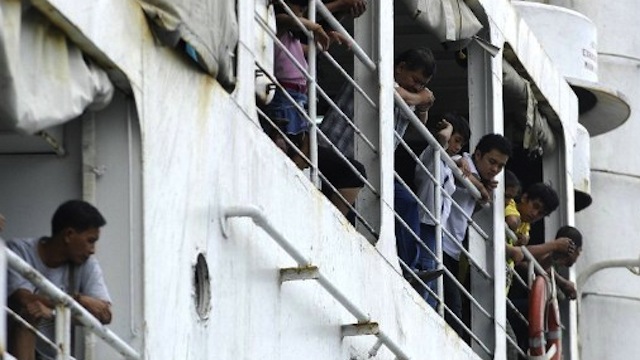SUMMARY
This is AI generated summarization, which may have errors. For context, always refer to the full article.

MANILA, Philippines – If Batangas City does nothing to climate-proof its port and roads, it may lose its status as a Luzon trading hub.
This was one of the conclusions made by a recently released study that measured how ready Philippine cities are for the impact of climate change. Among others, the changing climate can lead to stronger storms, extreme droughts, rise in sea levels, and more frequent floods.
With a score of 5.65 from a range of 1 to 10 (10 being the most vulnerable), Batangas City is less vulnerable than Naga City in Camarines Sur (6.10) and Tacloban City in Leyte (6.74).
The study, conducted by Worldwide Fund for Nature (WWF) Philippines and BPI Foundation, gave this score based on 3 factors: climate or environmental exposure, socio-economic sensitivity, and capacity to adapt.
Climate or environmental exposure
Batangas City sits at the edge of a gently sloping landscape that rolls downward into Batangas Bay. More than 73% of its land is located on slopes but because of their slight incline, geohazard maps show low susceptibility to floods and landslides.
The city’s western orientation protects it from the worst effects of tropical cyclones. However, more storms now enter the Philippine Area of Responsibility from the West Philippine Sea, meaning Batangas may not be able to enjoy protection much longer.
Its proximity to the sea and the dependence of the economy of fishing makes Batangas City vulnerable to impacts like rising sea levels, storm surges, warmer sea surface temperatures, and ocean acidification (change in the Ph levels of the sea which causes marine organisms to die).
Socio-economic sensitivity
Among the 4 cities assessed by the latest phase of the study, Batangas has the highest population growth rate. Over 20 years, the population increased to 305,607 in 2010 from only 187,970 in 1990 – a 65% increase in 20 years.
The more populated a city is, the more vulnerable it is to climate change.
Batangas, a transport hub, has its economy anchored in ship-borne passengers and cargo. It is considered a marine gateway to the rest of Calabarzon and ultimately to Metro Manila. Essential imports like oil, gas and automobiles are docked here.
It is also a transit point for inter-island RORO vessels serving Mindoro and Romblon.
Though the number of ships making port calls grew by 14% only, sea-based passengers rose by 68%, from around 2.8 million in 2000 to 4.8 million in 2012.
Adaptive capacity
The more money families and city governments save, the more capable they are of bouncing back to their feet after an extreme weather event like a storm or drought.
Batangas appears to have taken advantage of its booming economy. Average family savings for Region 4A rose by 155% from P14,000 in 1991 to P36,000 in 2009. This is the highest growth reported among the 4 cities. Employment rate is high at 90.8% of the population in 2012.
City savings also increased by 21%, from P341 million in 2002 to P413 million in 2011.
Recommendations
Because more storms are expected from the west, Batangas City must re-design and climate-proof its seaport so it still remains viable. A port is only valuable if it can ensure the safe passage and arrival of goods and passengers.
Aside from its port, Batangas City needs to make sure that all roads connecting it to Metro Manila and other parts of Luzon are all-weather. Major highways like the Star Tollway and South Luzon Expressway are prone to flooding and can endanger the city’s economy.
But aside from environmental impacts, climate change can trigger other phenomena. A United Nations study says that forced migration will become one of the main impacts of climate change.
Because of Batangas City’s relatively mild weather, booming economy and abundance in land, it can become a migratory sink. The city needs to prepare for this as the Philippine population grows, and storms worsen in other parts of the country.
***
Batangas City is one of 4 cities assessed by the study. The others are Tacloban City in Leyte, Naga City in Camarines Sur, and Angeles City in Pampanga. Previous phases assessed 8 other cities. Download the studies for all 12 cities from this site. – Rappler.com
Add a comment
How does this make you feel?
There are no comments yet. Add your comment to start the conversation.